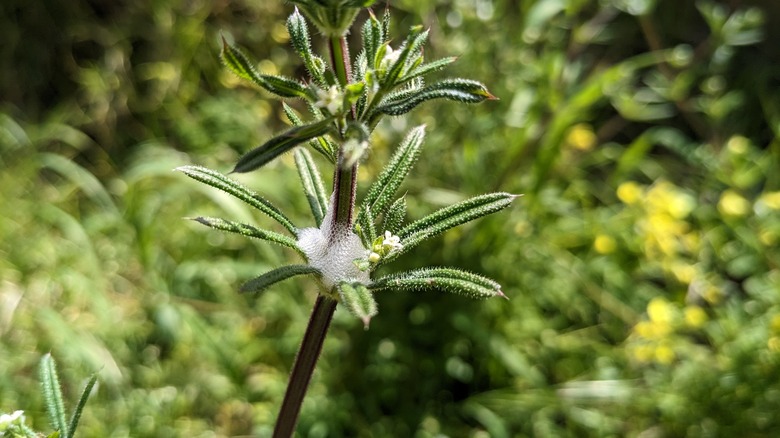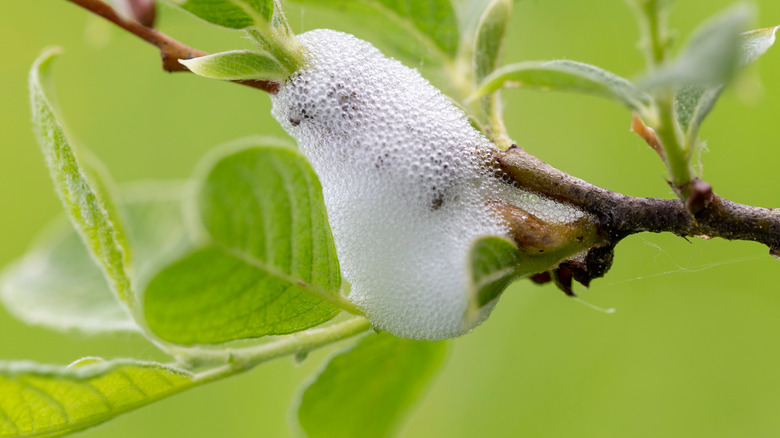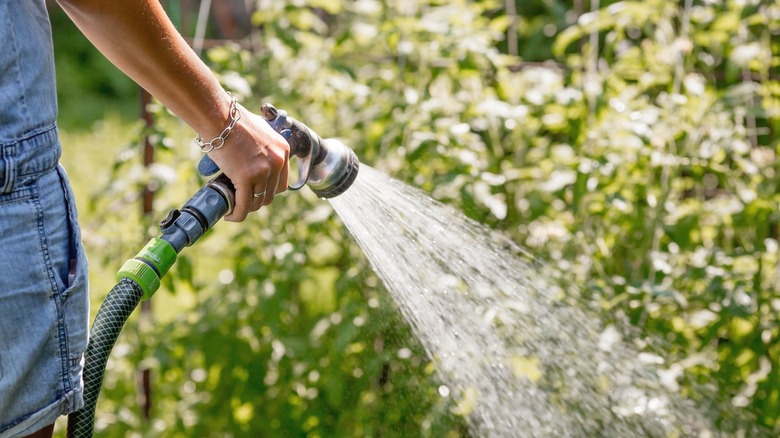How To Identify And Eradicate Spittlebugs On Your Lawn
Small in size and remarkable in their elusive nature, spittlebugs are members of the insect family Cercopidae. These insects also have a fascinating and somewhat peculiar trait they are renowned for — their nymphs create a unique, frothy substance commonly referred to as "spittle." This distinctive spittle gives them their name and acts as a marker of their presence. They can cunningly hide within the green expanse of your lawn, making it possible for them to slip under your radar at a casual glance. Along with the appearance of this frothy secretion, the coloration of your plants can also provide valuable clues to their presence. However, these signs are merely preliminary indicators that alert you to the presence of these pests. Thus, arming yourself with the ability to identify them serves as your initial bastion against these little invaders.
While identifying spittlebugs is a crucial first step, it's important to realize that it's just the beginning. Dealing with these insects involves more than mere recognition; a deeper understanding and strategic approach are necessary to effectively diagnose and treat the bug infestation. With the right knowledge at your fingertips, their presence on your lawn becomes considerably less cryptic.
Identifying these unseen bugs
Dainty in their physique and oval in their shape, spittlebugs are fascinating insects. Adult spittlebugs typically measure up to a diminutive 3/4 inch in length, while their younger counterparts, the nymphs, are even tinier. They are as diverse in color as they are in size; adult spittlebugs don an attire of brown or gray, while nymphs exhibit a vibrant transformation, ranging from bright orange to a lively green as they mature. Despite their colorful journey, their minute size and camouflaging coloration often make them difficult to detect. Thus, your ability to spot them in your garden becomes heavily reliant on identifying their other telltale signs.
Perhaps the most distinctive signature of a spittlebug infestation is the appearance of a frothy, white substance scattered across your lawn. The nymphs produce this peculiar "spittle," which serves as a haven and a barrier against predators and bad weather. Often tucked away on the stems of grass and various other plant life in your lawn, these spittle masses are an unmistakable indicator that spittlebugs have taken up residence amidst your greenery.
However, spittlebugs' presence does not equate to a cosmetic issue. When present in large numbers, these tiny insects can inflict noticeable damage to your lawn and other plants. They feed voraciously on plant sap, and their feeding frenzy may leave behind a trail of wilted, yellowing plants. Beyond this physical damage, spittlebugs can also transmit diseases from one plant to another, further exacerbating the issues they cause.
How to eradicate spittlebugs
Once you've identified a spittlebug infestation, it's time to take action. But don't worry; you're not helpless in the face of these tiny invaders. There are various ways to address and ultimately eradicate spittlebugs from your lawn. Firstly, begin with a careful inspection of your lawn, looking out for any froth or nymphs, which are usually found on the plant base. Physical removal is the next step if you already have an infestation. This can be as simple as using a hose to spray the spittle masses off your plants. When you disrupt their habitat, the nymphs are more exposed and more likely to die. You can also choose to remove them by hand. Put on a pair of garden gloves and gently brush the spittle off the plants, revealing the hidden nymphs. Then, carefully pick them off by hand and dispose of them safely.
When faced with a substantial spittlebug infestation, you may feel inclined to reach for chemical insecticides as a rapid and comprehensive solution. However, it's important to remember that such products don't always deliver the desired results, primarily because the spittlebug nymphs reside within their protective, frothy shields, making them resistant to many common insecticides. If you decide that a chemical approach is necessary, aim to use insecticides specifically formulated to target spittlebugs. Ideally, you want to choose a product containing a pyrethroid, a type of compound known for its potent insecticidal properties. However, ensure you carefully follow the usage instructions.


